Chris Baty's Blog, page 41
March 9, 2021
Choosing Your Protagonist’s Gender
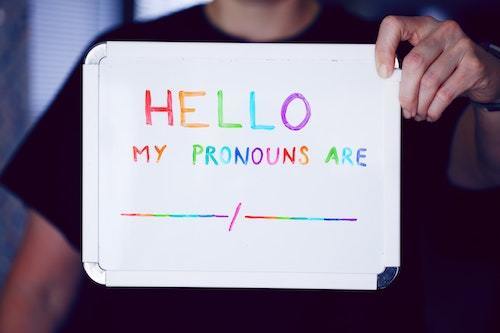
Sometimes, character building is tough. You have to come up with the perfect character to fit your story. NaNoWriMo Participant Nichole Fanara challenges us to think outside the box when writing new characters:
Have you ever thought of a great plot for your (hundredth) story, and instead of jumping in right away, you hemmed and hawed about who exactly your main character will be?
We writers know how important choosing characters (or letting characters choose you!) can be, because (let’s face it) your main character is the heart of your story. But trying to choose and describe a character can be difficult, because whether we realize it or not, there are a lot of stifling societal expectations about how a character’s identity changes the way the story “should” operate. Those unspoken “rules” can bog us writers down, and if we don’t want our characters to fit into societal boxes, we risk a lack of connection with the audience.
One of the biggest instances where your protagonist’s identity affects how readers see and connect with them is your character’s gender. So, imagine this: can we have more nonbinary, genderless, or gender fluid protagonists?
It’s becoming more common for writers to write characters using pronouns such as they / them rather than he / him or she / her. Characters can be full of emotion and spunk and liveliness without the confines of a binary gender, and readers will still be able to connect to that character even if they don’t fit into expected boxes.
As a teacher, I see more and more students deciding to question those expectations and choose pronouns that better reflect their identities. Why can’t they wear makeup? Why can’t they ride a motorcycle? Why should they be subjected to the gender norms that we as a society have grown so accustomed to?
A strong writer allows their character’s personality to be more than the sum of the parts of their various identities. When I think of my favorite characters in literature, I picture looks of determination as they conquer a difficult task, or warm moments of trust as they finally fall head over heels in love. It’s the human emotion that draws us into a character.
I suppose the real challenge for writers is, how do I make my character more human? How can I focus on an emotion that everyone can relate to, such as courage or fear? Can I focus on an experience such as a difficult choice or first love, without the restrictions of expected gender roles? Ask yourself, what makes your character relatable, and what kind of human choices are they making within the world you’ve established?
You can use these deep human emotions to help inform your character’s physicality. Once you choose an emotion, describe what that looks like. Maybe tears are rolling down their rosy cheeks, or they are picking at chipped nail polish. What does hope look like on their face? What kinds of dreams do they have for their future?
Hopefully by exploring your characters’ inner thoughts and feelings, you can get to the heart of who they are. What if those gendered societal boundaries or expectations didn’t exist? What could that look like?
So here’s my call to you, fellow writer: give it a try! If you are stuck behind the glass wall of gendered characters who “can” and “can’t” do particular things, try breaking your protagonist out of some boxes. Let them live how they want to live, let them make decisions and move the story forward, and fall in love like a human.

My name is Nichole Fanara and I am an English teacher and aspiring writer! I love to travel, play with my kitten, and actively seek out anything pumpkin related. I am currently working on two YA novels, one of which is in the final edit stage and I am super psyched about it! You can check me out here!
Top photo by Sharon McCutcheon on Unsplash.
March 5, 2021
What Kind of NaNoWriMo Camper Are You?
Do you take the relaxed approach to writing? Or are you a hardcore writer who blasts through your writing goals? Do you love to write outside, or do you need to have your creature comforts? Take our handy quiz to find out what kind of NaNo Camper you are!
Since we’re getting ready for Camp NaNoWriMo, we’re bringing this fun quiz back! What kind of Camper will you be?
March 3, 2021
Join Camp NaNoWriMo This April!
 Start your next writing adventure!
Start your next writing adventure!
It’s time to check out Camp NaNoWriMo! If you haven’t heard of Camp, it’s a month-long writing challenge like NaNoWriMo that takes place in both April and July. The key differences are that you can set your own word-count goal, and officially tackle any writing project, novel or not.
Need to finish those last 10,000 words of last November’s novel? This is the time! Want to write 75,000 words of that memoir you’ve been dreaming about? Give it a shot! Want to branch out into poetry or screenwriting or graphic novels? Let’s get it, writer.
How does it work?🔈 Announce Your Project — To participate in Camp NaNoWriMo, just announce a project, then make sure to check “Associate with a NaNoWriMo event”, and select the current Camp NaNoWriMo event. You’ll be able to start updating your word count when Camp officially begins on April 1!
⏱️ Decide on a Goal — Right now, our site only supports word-count goals. If you want to track another kind of goal, such as time or pages, here’s a conversion chart with some guidelines on how to set a goal that works you.
📝 Prepare to Write — Check out our “NaNo Prep 101” workbook for tons of interactive exercises to help you develop your story idea, organize your writing time, and more!
✍🏽 Join a Writing Group — Looking for a writing group to keep you accountable? You can join a group of 3 – 20 writers to share your progress, encouragement, and resources as you write. Start a writing group of your own, or find a writing group to join in the forums. (You can join as many groups as you’d like!)
🗓️ Join an Event — View and participate in upcoming events, such as virtual write-ins, tweet chats, webcasts, and more! Our next scheduled event is the announcement of 2021 Pitchapalooza winners with The Book Doctors on Saturday, March 13, at 12 PM Pacific.
Applications are also now open for the Black Creatives Revision Workshop hosted by our friends at We Need Diverse Books! They’ll be hosting a Twitter Q&A this Friday, March 5, at 4 PM Pacific for interested participants.
February 26, 2021
Celebrating Black History Month All Year Long
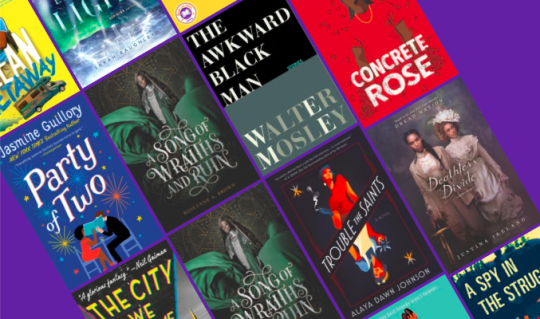
Although February is coming to an end, the work of uplifting Black creators and communities doesn’t stop.
One of our most important works-in-progress at NaNoWriMo is creating a more diverse, equitable, and inclusive community of writers. In thinking about our impact, NaNoWriMo has specifically focused on racial equity as a major organizational focus moving forward. We’ll continue to post monthly updates on our progress toward our goals, and we’d also like to share a round-up of some of the resources and links we’ve put together this month to celebrate Black creators in our community.
📚 Find your next great read on this list of the latest books by Black authors NaNoWriMo has partnered with! (Plus, if you shop through this Bookshop link, a percentage of sales goes toward supporting both our non-profit AND indie bookstores!
📖 NaNoWriMo Communications Manager Chanda Briggs writes about celebrating Black creativity.
🎥 If you’re looking for some awesome Black BookTubers to follow, these are some of our favorite fellow Wrimos. Check them out and subscribe to their channels!
📚 In the fall, we spotlighted eight Black-owned bookstores in our store emails. Here’s the list of bookstores we highlighted—we loved sharing their stories (and really cool merch!) with you.
📝 Is there a BIPOC-owned bookstore near you that you love? Tell us about it! We’ll continue to feature more BIPOC-owned bookstores in our upcoming store emails.
February 24, 2021
“Now What?” Round-Up
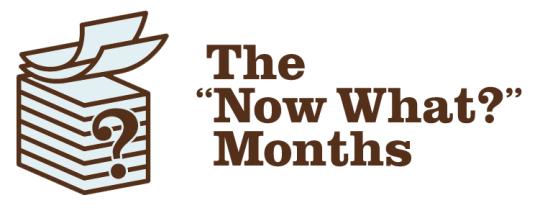
Although we’re wrapping up our “Now What?” focus here at NaNo HQ to start getting ready for Camp in April, that doesn’t mean that any of our revising, editing, or publishing resources are going away! They’ll be available to access at any time during your noveling process, since we know that everyone’s writing journey progresses at their own pace.
In case you missed any of our events, or if you want to save them to view later, here’s a round-up of some of the best Now What resources we’ve had to offer this year. Plus, we’re hosting a live “Ask an Agent” Instagram takeover this Friday, February 26 at 11:00 AM PST (Your Time Zone) if you’d like to ask a literary agent your questions! Just follow @nanowrimo on Instagram and submit your questions to our Story during the takeover if you’d like to participate.
Links Round-Up:📚 Revision Guide Workbook — A step-by-step workbook filled with ideas and activities to help you polish your novel.
🎥 How to Make Your Personal Story Stand Out — Expert writers and mentors Cornelius Minor and Tashie Bhuiyan talk about how to create a great personal narrative.
📝 Submit to Pitchapalooza 2021 — Submit a 250-word pitch of your book to The Book Doctors for the chance to win an introduction to an agent or publisher! Submissions close February 28, 2021.
📝 Young Writers Program Contest — If you’re a writer age 18 or under, you can submit to our 2021 “Now What?” Young Writers Contest! Submissions close February 28, 2021.
🎥 How to Self-Publish — NaNoWriMo sponsor Kobo and best-selling author Adam Croft share the in’s and out’s of self-publishing!
💬 Novel Draft Aftercare — If you’re wondering what to do with the glorious, messy first draft of your novel, this is the place to ask for advice from fellow writers!
🎥 Revision and Submission Advice — Author Minh Lê discusses revision advice, submission tips, and the many twists and turns a story takes from first to final draft.
🎧 Indie Writing, Indie Publishing — Orna Ross, an award-winning and bestselling self-published novelist and poet, shares a wealth of indie publishing wisdom.
🎥 How to Copyedit — NaNoWriMo sponsor Pro Writing Aid chats about the do’s and don'ts of copyediting.
📚 NaNoWriMo Editing 101 — NaNoWriMo sponsor Scribendi shares some basic editing tips for your first draft.
🎥 From Idea to Draft to Published Book — NaNoWriMo sponsor Sisters in Crime and a panel of special guests discuss the journey of a book—from idea to draft to published work!
February 17, 2021
How NaNo Got Me Back in the Writing Groove!

Have you ever lost your writing momentum, only to have an idea sparked by something random that sweeps you up in a story? Today, NaNoWriMo participant Paola M. shares how she got her writing spark back after a five-year break:
The first time I wrote 50,000 words in 30 days, I was 18 years old. I had attempted to write a “novel” for almost an entire year, and as I found out, I did not have the tools or resources a writer needs to be “good.” So I subscribed to a newsletter that would send writing advice and prompts weekly or biweekly, and I was reading a lot of fanfiction whose writers would share their own personal writing advice and the resources that worked for them. I was a sponge, soaking up all of this information from the last few months of 2012 and most of 2013 to craft my characters and outline for my first ever NaNoWriMo project.
Since I didn’t keep a journal back then, I have no way of knowing if what I’m about to say is true, but I remember that I flew through that novel. I kept an Excel document to track my word count before I updated my NaNo profile, I was naming chapters, I was meeting my word count goal every day and on some good days, even exceeding it. It was amazing!
The last time I took part in a NaNo-related challenge was in July 2015. I won Camp NaNoWriMo, having written 81,389 words of my 80,000 word count goal. I swear that if it weren’t for my account, I would not even remember having written this many words in 30 days. Then college took over my life and I didn’t have time to even think of original stories I wanted to tell. I was stressed and overworked.
By the time I was done with college I had read over 100 books and was active on the bookish corner of the internet. I was following readers and writers and watching their NaNoWriMo vlogs, green with envy because I wanted to do that. I wanted to be back in the writing groove, to feel like I could come up with things worth of people’s time and attention. But, try as I might, I couldn’t come up with a plot or a character or even a world I could have fun writing about. Then, for some strange reason, the creative bells in my head started ringing when I watched RuPaul’s Drag Race Holi-slay Spectacular on Netflix.
With no plans of joining NaNoWriMo this year, I sat down and wrote an outline. And then, the strangest thing happened. I outlined another novel, also based on drag queens. I was excited and scared. Scared because I was so rusty from all those years of not having written a single word. But excited because this was the first time in 5 years where I finally felt like I was ready to write again.
As soon as I finished that second outline, I decided to participate in NaNoWriMo 2020 and see where it would take me. And low and behold, I won! I wrote 50,000 words in 30 days all because I let that fear go. I was no longer scared of other people reading my work, because it’s NaNoWriMo, dammit! It’s only the first draft. It’s supposed to suck.
So let all your worries go and write! Only then will you have a manuscript to edit and revise, and hopefully get to publish one day.

Paola M. is a Mexican morenita who loves books and musical theater. She is currently an editorial intern at Entangled Publishing and a marketing assistant at Caffeine Book Tours. She runs a book club called Accidentally in Love, dedicated to reading adult romance books by marginalized authors. She is also the organizer of LHM Book Fest, a month-long event dedicated to uplifting Latinx voices in literature. Follow her on Twitter, Instagram and YouTube!
Top photo by Eric Murray on Unsplash
February 12, 2021
Project For Awesome 2021
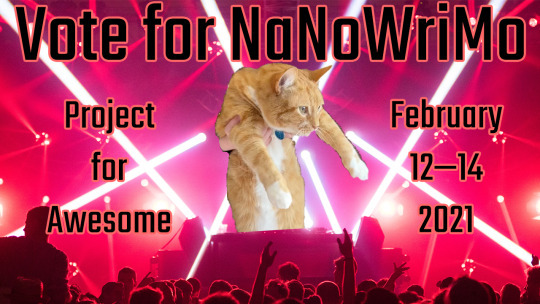
It’s Project for Awesome time! Project for Awesome, or P4A, is an annual fundraiser that raises money and awareness for all kinds of nonprofit organizations. We’re in the running for a grant of some of the money raised through P4A, and your vote can help us win.
Vote by 9 AM PST this Sunday, February 14, to help us support even more writers.It’s simple:
Click on this link or search for “NaNoWriMo” on the Project for Awesome site.Click on each video. (Please vote for ALL the NaNoWriMo videos—voting is cumulative!)Select the “I’m not a robot” check box, then click the big VOTE box.Share the voting link with your mutuals!And… that’s it! (Well, you might want to watch the videos too, we’ve gotten pretty silly over here at NaNo HQ during quarantine and it shows.) Thanks so much for helping to support our nonprofit and our mission to make creativity fun and accessible!
February 9, 2021
Tomorrow (Wednesday, February 10) is the last day to submit...
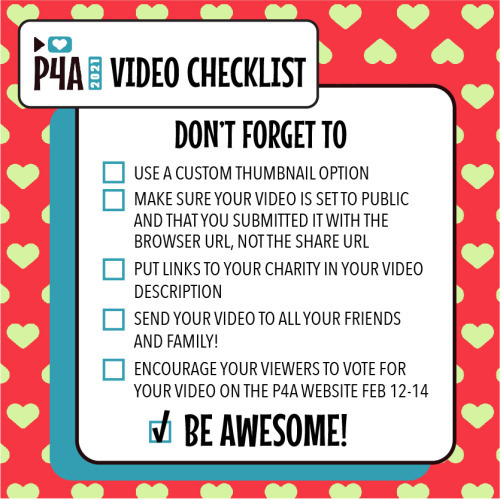
Tomorrow (Wednesday, February 10) is the last day to submit videos for Project for Awesome 2021!
Project for Awesome is a yearly event where YouTube creators submit short videos advocating for their favorite charity or nonprofit. In the past, NaNoWriMo has received significant grants from P4A to help support our programs.
If you’re able and available to make and submit a short video about what NaNoWriMo means to you, you would help our nonprofit potentially earn a really important grant! Just make sure to upload your video to YouTube and submit it to Project for Awesome by Wednesday, February 10.
Important Dates
The submission window for uploading P4A videos will be from Wednesday, February 3, through Wednesday, February 10.Voting for videos will be open from Friday, February 12 through Sunday, February 14.Essentially, the more videos that are uploaded in support of NaNoWriMo, the better our chances of getting the votes to win the grant will be!
Video Guidelines
If you are a person with a YouTube channel, or know someone who has a YouTube channel, or are just generally familiar with the basics of video editing, we’d love it if you wanted to make a video about NaNoWriMo for P4A! The videos are encouraged to be short and do not have to be heavily edited or produced at all, this is not a case of needing to be fancy!
You can find more information about sharing a video for Project for Awesome here. If you’d like us to know that you made a video, or have questions for us about it, you can let us know in this forum thread! We’ll be promoting all the videos made in support of NaNoWriMo throughout the voting weekend.
Image description:
A red background with yellow hearts titled “P4A 2021 video checklist.”
Below is a box with a list that says, “Don’t forget to…”
Use a custom thumbnail optionMake sure your video is set to public and that you submitted it with the browser URL, not the share URLPut links to your charity in your video descriptionSend your video to all your friends and family!Encourage your viewers to vote for your video on the P4A website Feb 12-14Be awesome!February 5, 2021
A Step-by-Step Guide to Self-Publishing a Middle Grade Adventure Book
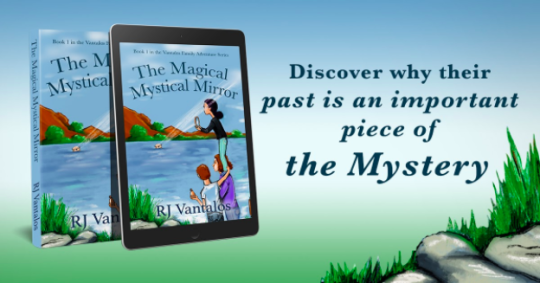
It can be so exciting to share your story with the world! While everyone’s writing journey is different and there’s no right way to seek publication, here’s a guide from middle grade author RJ Vantalos detailing the steps they took to get their novel published:
Back in November 2018, my writing partner (my fiance’s 11-year-old daughter!) and I wanted to craft a middle-grade fiction book during NaNoWriMo. We decided to write about a family that has magical powers that they use to save a romp of Sea Otters in Monterey Bay.
That NaNoWriMo journey created the first draft of the book we just self-published called The Magical Mystical Mirror under our pen name RJ Vantalos. Why a pen name?
As artists, we want to focus on our art and write some great stories together. RJ Vantalos gives us the space to collaborate as co-authors in this adventure series under a single banner, without blurring the lines with other aspects of our respective lives. Besides, RJ Vantalos is just an awesome pen name and was begging to be put to use.
We wanted to share how we did it so that if you might have a book you want to self-publish, you’ll at least have one experience to guide you.
Know Your Genre and What Readers ExpectAt the time, we wanted to write a middle-grade story that had some roots in our lives. Since we take trips to Monterey Bay often (at least before COVID), we decided to make that the setting of our story.
Since one of us is a middle-schooler who loves both Scooby-Doo and Nancy Drew, it was decided that she would guide what a middle-grade reader might want to read about. This was invaluable and allowed us to fill in a lot of the story as we took our trips to Monterey Bay Aquarium, Mission Carmel, and Cannery Row.
We also knew that we wanted to have some magic, mystery, and a “crime” to solve. That led us down the path of Fantasy/Adventure that’s a cross between Scooby-Doo and Harry Potter.
What this also did was make us realize that we needed to have illustrations for the book. The middle-grade chapter books we are fond of, such as Boxcar Children, Nancy Drew, to name a few, all had illustrations.
So the first step in our process (after we finished our Draft 0 during NaNoWriMo in 2019) was to find an illustrator. You can skip that if you don’t need them.
Step 1: Find an IllustratorWe needed to have illustrations for the cover and beginning of each chapter. That was an essential part of what a middle-grade chapter book must provide for the reader. We worked with a local San Francisco artist named Julia Geller who writes books as well.
We had to make sure that our draft was not going to change too much since the illustrations will be based on what’s in each chapter. That’s why we needed to make sure it all made sense. This brings us to step 2.
Step 2: Have Friends and Family Read ItThankfully, we have a wide variety of friends and family in our target reader group, so they served as our “beta readers.” This is an essential part of creating a story that works for your readers. As we had them read the close to final drafts, we got a lot of great advice on how to refine the story. This refining process is a good way to know when you’re ready to hire an editor.
Step 3: Hire an EditorHiring an editor is a great way to ensure that your final book makes sense and does not have typos. Since we already had the structure of the book nailed down, we only needed to hire a line editor as opposed to a structural editor.
For what, we used Kerrie McLoughlin, who not only is a great copy editor but also has kids in our age demographic. Win and double win!
Step 3b: Rounds of EditingEditing a book is such an art and it’s also something that feels like it’s never done. After we got the edits from Kerrie, we went through them to make sure they worked from our perspective. Even after that, we got others to look at it just to make sure.
If you don’t have someone awesome like Kerrie, there is a marketplace for editors on Reedsy.
Step 4: Create a CoverJulia also did the cover illustrations for the book but not the cover. For that, we used 100covers. At first, you might be tempted to try and do a cover or use an automatic cover generator from one of the self-publishing tools (more on that later). We’d recommend against that.
One thing we found is that automatically generated covers tend to be a little off and that makes the paperback look a little weird. For eBooks, that’s not as true. We’d say experiment with it and see how it looks. The beauty of self-publishing is that you control the process and can iterate over and over again. Which we did.
One upside with having 100covers do your cover is that we got a lot of marketing images to use as well since we picked that package.
Step 5: Format the Inside of the BookSince we have images in our book, we hired Formatted Books to do both the paperback and the eBook. This worked out extremely well. At first, we tried to use the Reedsy formatting tool to create the print version. This did an okay job.
The problem was with the images and how we wanted them to look. We wanted the images to be above the first page of the chapter. The Reedsy tool did this but not on all of the chapters.
If you have a book that is not image-heavy (or no images at all), then you could save a bit of money on formatting. Again, play around with it and see how it turns out.
Step 6: Setup the Book on BlurbWe used Blurb.com as our “publisher” for the print version. It’s an easy site to use and also allows independent bookstores to order books as well. This was an important part of our promotion plan. We LOVE independent book stores and want all our friends and family to be able to buy them there.
Of course, with Blurb, they can also buy it on Amazon and Barnes and Noble if they so choose.
Step 6b: Setup the eBook on KoboBlurb.com does offer eBook distribution but you have to create an eBook from your print book pdf. This did not work out for us.
The formatting of The Magical Mystical Mirror turned out awful when we ran it through Blurb’s converter. It also gave us an error that we could not use the font that was in the print version. That was the main reason the formatting went wrong. When the tool tried to swap the fonts, everything went sideways. That’s why we went with Kobo.
Kobo.com allowed us to upload the eBook we got as part of the package from Formatted Books. This worked out awesome.
Kobo is easy to use and is a great way to sell the eBook (and audio if we had one) all over the world. We first heard of Kobo from Joanna Penn, whose podcast and books on self-publishing we relied on for help and guidance. She’s even done NaNoWriMo several times!
Step 7: Review Print & eBookWe did several rounds of galley copies of the print book to double and triple-check it. A galley copy is what publishers call the first book(s) “off the press” that is used for final checks.
We did find a couple of typos and mistakes in the galley copies that we had to feedback to Formatted Books. It’s hard to find every typo or misspelled word when looking at an electronic copy. We’d highly recommend getting a couple of galley copies to look at before officially hitting publish.
Step 8: Hit Publish!On both Blurb and Kobo, you can keep your book in “draft” while you’re reviewing all the versions. You’ll also have to set pricing for all of your versions and if you’re selling to bookstores, the discounted price. Both tools have good guidance on this and we would recommend looks at “comps” in your genre. “Comps” are books that are similar to yours.
Congratulations! You just self-published your book. Have a party to celebrate while you think about how to promote your book.
The Promotion PlanWe love independent books stores and a big concern of ours was whether or not they could carry our book. Thankfully, if you use Blurb, they can.
Our promotion plan is centered around local independent bookstores and creating demand for the book via friends and family. Of course, writing a blog post on NaNoWriMo does not hurt either!
Research All Your Local BookstoresWe used bookweb.org to find our local books stores. This only works for U.S. based bookstores. They have a great search feature that gives you a URL for the search results. This URL is what we’re going to email to all our friends and family along with instructions on what to tell them.
We know this is a bit “old school” but it’s important to us that we try and promote our local independent bookstores to help our local economy. We’re not sure how successful it will be yet but it’s worth a try.
Thanks for Reading This FarIf you made it this far, thanks for reading our journey to self-publishing The Magical Mystical Mirror. It was a lot of work but also a lot of fun. There is something magical about seeing and feeling a book you worked on. For us, it’s a matter of pride and a job well done that we had an idea and it’s now a reality.
If you’d like to read The Magical Mystical Mirror, why not try and pick it up at your local independent bookstore. The ISBN number is 978-1034384199. Tell them RJ sent you! If you’d like the eBook version, then try Kobo.
RJ Vantalos is the pen name of the collaboration between an entrepreneur and his fiance’s middle-schooler daughter who one day said “why don’t you write books for kids?” So we did! RJ wants all young writers, their friends, and their adults to create more together. It’s through creation that we can all learn more about each other and thrive. RJ lives in San Francisco, CA.
February 3, 2021
Battling The Bump: Triumphing Over Writer’s Block
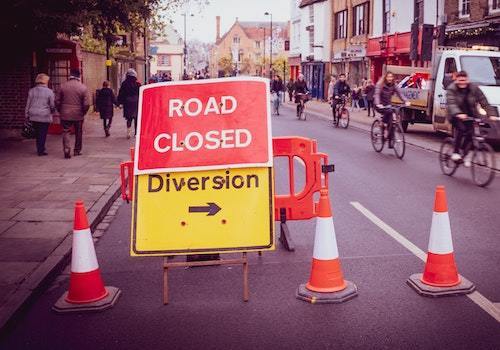
It’s important to take breaks when you’re writing so that you don’t get blocked. Here are some helpful hints by Young Writers Program Participant Cozetta J!
As we all know, writer’s block is no fun. Writer’s block is when you want to keep writing, but you feel like you can’t. Like the words and the inspiration won’t come. Let’s go back to when you were first starting to write your book. Your novel was doing great. The plot was progressing, and your characters were thriving. You were so excited about getting your novel started, and you couldn’t wait till you had it finished and on your shelf; possibly even published!
But then, all of a sudden, you realize that your plot went by too fast, or you got ahead of yourself and you began writing about things that weren’t supposed to happen till a while later in your book. You realize that your book is a mess. Disgusted, you stop writing your novel, and you move on to other things. Everyone keeps telling you to “not give up!”, or “don’t stop writing!” which are two very important things to do. But sometimes, you need a break from writing. There is such a thing as writing TOO much in too little time. I’m not saying that it can’t be done, just that it could give you the dreaded writer’s block. But can you really avoid getting it? Well, I am sorry to say that you can not. It’s almost like your brain just freezes and says, “This isn’t fun anymore,” and so you stop writing your novel.
It is easy to come up with an interesting plot for your story; with lots of exciting things that are going to happen in your book. The hard part is bringing your plot to all 50,000 words of your novel. When your novel’s exciting first few chapters end, you may have no idea what is supposed to happen next, so you might quit. I can’t tell you what you are supposed to write there, or how you are supposed to write it; but I can give you some ideas that sometimes help me.
Stop writing for a little while if you’re stuck. Don’t force yourself to write. Even though sometimes it may help you to do so, you don’t want to hate your work! If you are not liking the way your novel is going, don’t try to fix it until you know exactly what you want to put there instead.Make a timeline chart for your book. Write out on a big sheet of paper your story outline, and plan on what every chapter is going to be about. Write down when your characters come in, or when they leave. Now that your novel’s outline is where you can see it, try writing a little bit everyday, till you feel your excitement and creativity coming back to you. Don’t worry, you will get over your writer’s block if you really want to. Want to write. Don’t just give up on your story, want to finish it out and be proud of the work you’ve done so far. Don’t quit, just take a break every so often and do what you like to do best and the ideas will come to you; I promise. Find a quiet place to just sit and think about your story. Play your novel over and over in your head just like a movie. Imagine your plot and your characters. Cry with them, laugh with them, love them. They are your friends, don’t throw them away. They are waiting for you right now to write what happens next to them.So go, finish your novel. Do what works best for you. Go, your writing and the world awaits!
Cozetta (Cozy for short) loves writing, reading, playing violin and piano, exploring the woods and roller-skating. She dreams of becoming a full-time author, and a professional roller- skater. She lives in Belton, Missouri, with her parents, her six younger siblings, and her favorite dog in the world, Rose.
Chris Baty's Blog
- Chris Baty's profile
- 63 followers



